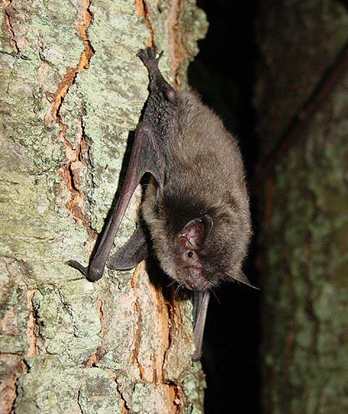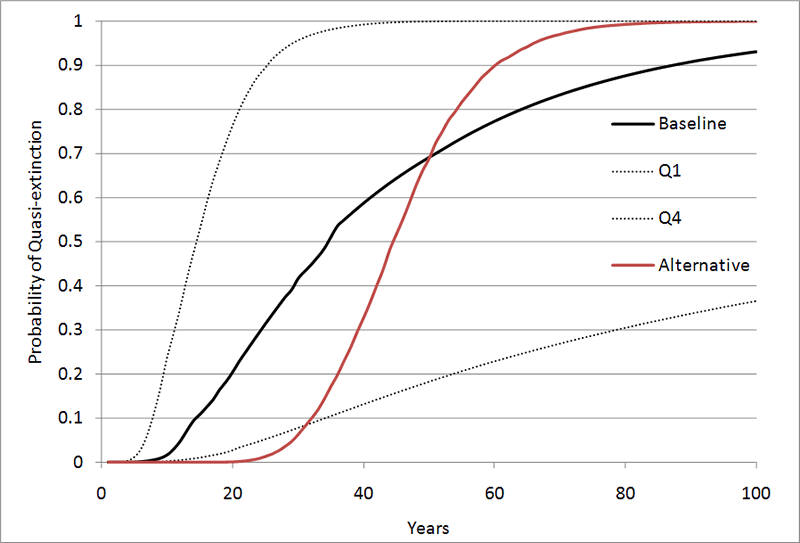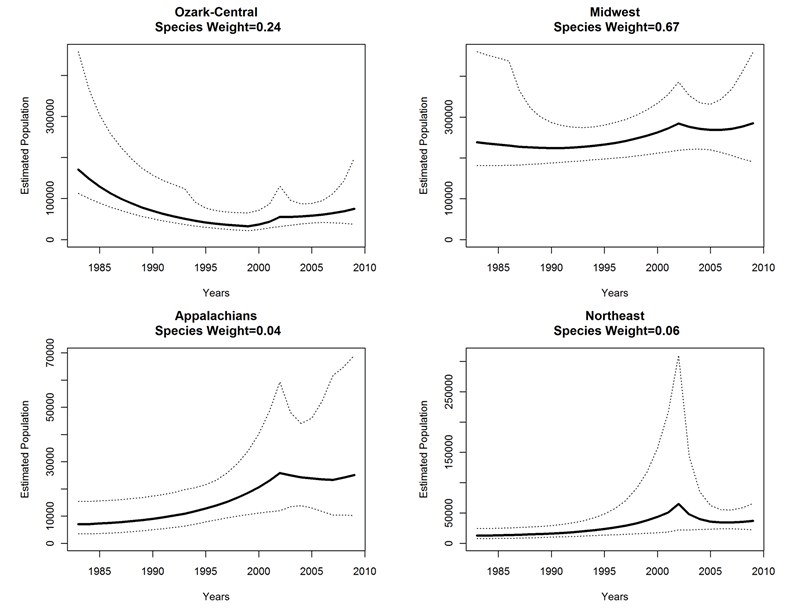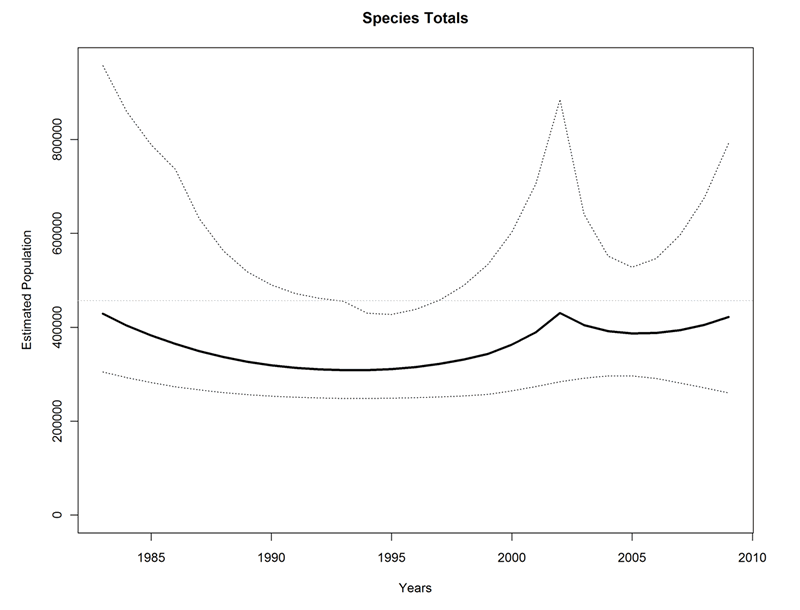Upper Midwest Environmental Sciences Center
Population Demographic Models for the Conservation of Endangered Indiana Bats at Risk to White-Nose Syndrome
Bats are nocturnal, flying mammals that eat insects or fruits, pollinate flowers, distribute seeds, and are important to many ecosystems. Across North America there are 45 species of bats, many of which are threatened or endangered. One species of federally endangered bat, the Indiana bat (Myotis sodalis), is a medium-sized, gray, black, or chestnut brown bat living primarily in eastern, midwestern, and parts of the southern United States. Reasons for the bat's decline include disturbance of colonies by humans, pesticide use, and loss of summer habitat resulting from the clearing of forest cover. Recently, a potential range-wide threat to Indiana bat survival is caused by white-nose syndrome, a disease named after a white fungus (Geomyces destructans ) found growing on the muzzles, ears, and wings of some afflicted bats. White-nose syndrome was first discovered in winter 2006 at Howe’s Cave, New York, near the northeastern edge of the species’ winter range. Mortality rates may exceed 75% for hibernacula (places where bats hibernate) affected by this syndrome. Since its discovery, white-nose syndrome has spread to many more hibernacula, severely reducing bat populations. The loss of 18,662 Indiana bats from white-nose syndrome in 2008 alone represented a loss of ~4% of the range-wide population. This novel threat increases the urgency for understanding the population dynamics of this endangered species. Unfortunately, there is a scarcity of population characteristics or demographic information for the Indiana bat and no models have been devised for this species. A Need for More Information The U.S. Fish and Wildlife Service, a federal agency responsible for this endangered bat, would like to be able to predict the consequences of alternative actions for the conservation and recovery of the Indiana bat, but at this time, an appropriate population model is not available. The goal of this study was to develop models and software for allowing recovery coordinators and associated agency biologists to predict the consequences of alternative management scenarios. Science Impact The model, associated software, and user’s guide will be available for download from the Upper Midwest Environmental Sciences Center’s website (umesc.usgs.gov). The model will allow natural resource professionals to evaluate the Indiana bat population dynamics and impacts of white-nosed syndrome in the context of conservation and restoration decision making and management options. |
|
|
|
Four-Stage Dynamic Model
To adequately model Indiana bat populations a panel of species experts and endangered species biologists were gathered to identify key demographic characteristics determining the population dynamics of this species. The development of this model occurred in four steps or stages. Model prototypes focused on individual and multiple hibernacula, as well as point estimates and a range of variation in population characteristics.
We developed the model prototypes in Matlab R2009a (Mathworks, Natick, MA), and by Stage 4, converted to a GUI interface written in the freeware R (R Development Core Team, Vienna, Austria). The final model runs parallel model scenarios, allowing an explicit assessment of the differences between management scenarios. A user is able to provide two sets of input values for the model parameters; typically these will be the baseline conditions and changes from baseline (but it may also be two competing scenarios).
Model users are allowed to state variables associated with each recovery unit (i.e., size of the population as determined from census counts or expert opinion, number of winter sites within a recovery unit) or use pre-programmed settings for default scenarios. Since there is concern that impacts upon the species may have both an immediate effect on the take of the species as well as a longer-term impact upon survival, the intention is to allow the user to modify these two parameters.
Lastly, a simple tabular and graphical output of model results is available. For instance, users can generate a graph of the differences in two model scenarios and their impact on time to extinction (Figure 1) or future population estimates following white-nose syndrome for regional (Figure 2) or entire population (Figure 3).
For details, see Thogmartin et al. (2012)' or 'For details, see Thogmartin, W. E., P. McKann, R. A. King, J. A. Szymanski, and L. Pruitt. 2012. Population-level impact of white-nose syndrome on the endangered Indiana bat. Journal of Mammalogy, In press.
Page Contact Information: Contacting the Upper Midwest Environmental Sciences Center
Page Last Modified: February 1, 2016







